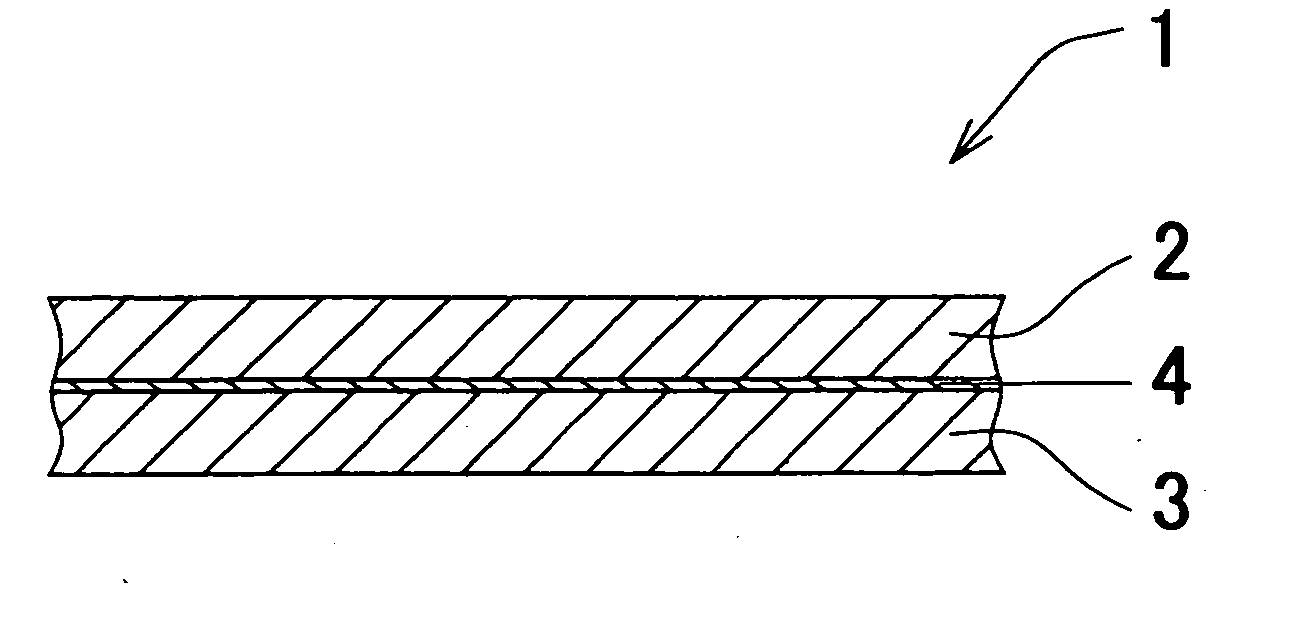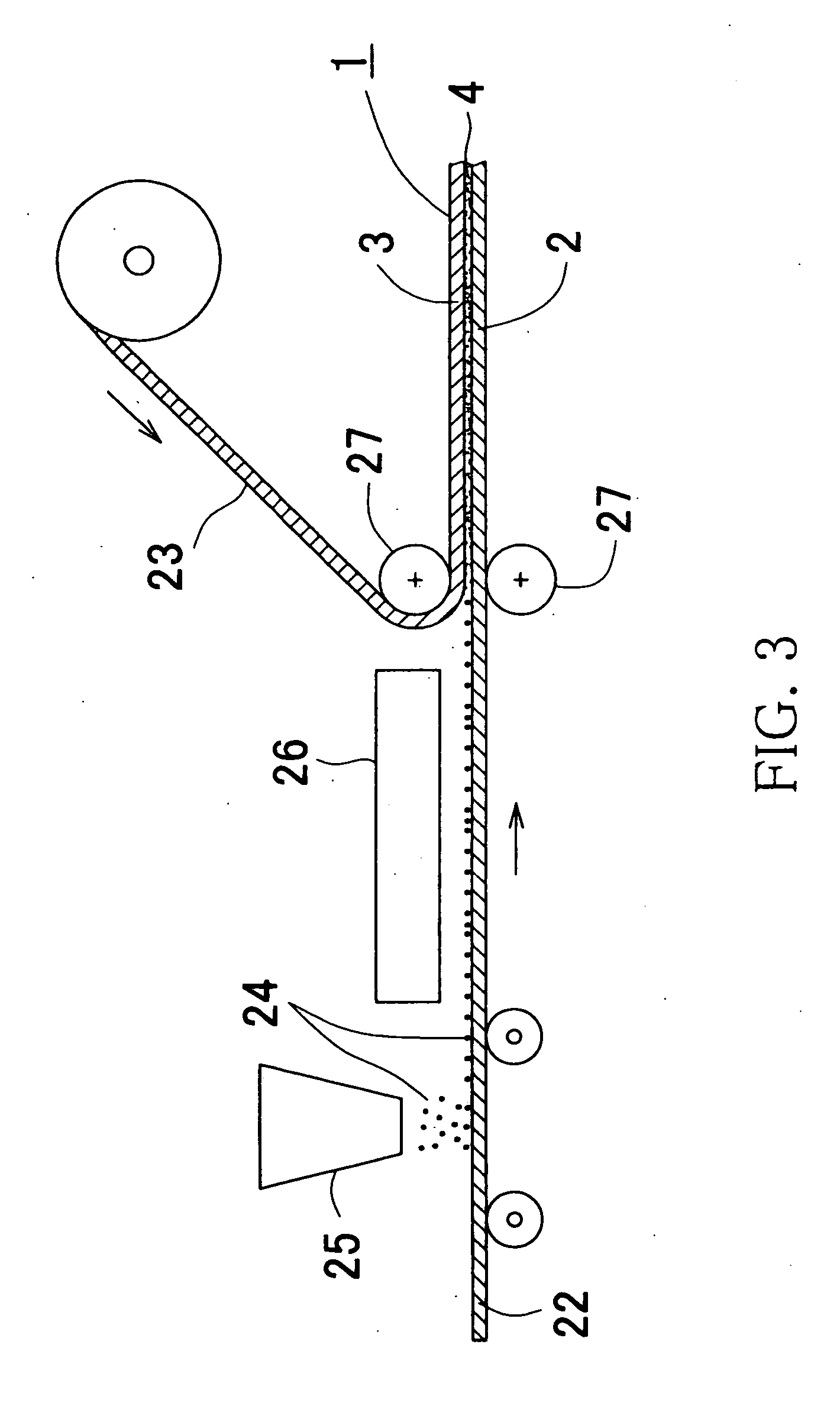Carpet for vehicles and method for manufacturing the same
a technology for vehicles and carpets, applied in the field of carpets, can solve the problems of insufficient noise reduction of carpets, and achieve the effect of effectively absorbing the noise entering
- Summary
- Abstract
- Description
- Claims
- Application Information
AI Technical Summary
Benefits of technology
Problems solved by technology
Method used
Image
Examples
example 1
[0058] As shown in FIG. 3, while transferring the upper surface member A (22) at a constant rate with the pile side faced downward, the aforementioned thermoplastic resin powder A (24) was scattered on the upper surface member A (22) at the scattering rate of 300 g / m2 from the scattering device 25. Subsequently, the powder A (24) was heated to 150° C. by the heating apparatus 26 and melted. Thereafter, the aforementioned nonwoven fabric A was disposed thereon and pressed by the water-cooling-type cooling pressure rollers 27 and 27. Thus, a carpet 1 for use in vehicles was obtained. The air permeability of this carpet 1 in the thickness direction was 18 cm3 / cm2·second.
[0059] As shown in FIG. 3, while transferring the upper surface member B (22) at a constant rate with the pile side faced downward, the aforementioned thermoplastic resin powder B (24) was scattered on the upper surface member B (22) at the scattering rate of 400 g / m2 from the scattering device 25. Subsequently, the po...
example 3
[0060] As shown in FIG. 3, while transferring the upper surface member B (22) at a constant rate with the pile side faced downward, the aforementioned thermoplastic resin powder C (24) was scattered on the upper surface member B (22) at the scattering rate of 50 g / m2 from the powder scattering device 25. Subsequently, the powder C (24) was heated to 120° C. by the heating apparatus 26 and melted. Thereafter, the aforementioned nonwoven fabric A was disposed thereon and pressed by the water-cooling-type cooling pressure rollers 27 and 27. Thus, a carpet 1 for use in vehicles was obtained. The air permeability of this carpet 1 in the thickness direction was 30 cm3 / cm2·second.
example 4
[0061] As shown in FIG. 3, while transferring the upper surface member A (22) at a constant rate with the pile side faced downward, the aforementioned thermoplastic resin powder A (24) was scattered on the upper surface member A (22) at the scattering rate of 250 g / m2 from the scattering device 25. Subsequently, the powder A (24) was heated to 150° C. by the heating apparatus 26 and melted. Thereafter, the aforementioned nonwoven fabric C was disposed thereon and pressed by the water-cooling-type cooling pressure rollers 27 and 27. Thus, a carpet 1 for use in vehicles was obtained. The air permeability of this carpet 1 in the thickness direction was 38 cm3 / cm2·second.
PUM
| Property | Measurement | Unit |
|---|---|---|
| particle size | aaaaa | aaaaa |
| thickness | aaaaa | aaaaa |
| particle size | aaaaa | aaaaa |
Abstract
Description
Claims
Application Information
 Login to View More
Login to View More - R&D
- Intellectual Property
- Life Sciences
- Materials
- Tech Scout
- Unparalleled Data Quality
- Higher Quality Content
- 60% Fewer Hallucinations
Browse by: Latest US Patents, China's latest patents, Technical Efficacy Thesaurus, Application Domain, Technology Topic, Popular Technical Reports.
© 2025 PatSnap. All rights reserved.Legal|Privacy policy|Modern Slavery Act Transparency Statement|Sitemap|About US| Contact US: help@patsnap.com



